Top Ten Coolest-Looking Asian Mythical Creatures
Asian mythologies are very interesting. Asian mythical creatures are pretty cool-looking and bizarre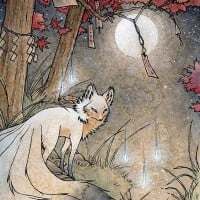 In Japanese mythology and folklore, Kitsune is often depicted as a trickster and a mischievous creature that enjoys playing pranks on humans.
In Japanese mythology and folklore, Kitsune is often depicted as a trickster and a mischievous creature that enjoys playing pranks on humans. Kitsune is a mythical creature from the Japanese mythology.
Kitsune is depicted as a fox with powers and having tails from 1 to 9. The nine-tailed Kitsune, Kyuubi no Kitsune, is the strongest form of Kitsune. There are Chinese and Korean versions of the Kitsune: Huli Jing (origin of the Kitsune) and Gumiho.
I first heard of these creatures in Naruto and from TwilightKitsune's name.
I'm trying to write a story about them.
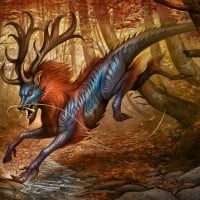

Chinese dragon is a mythical creature from China (duh, obviously...)
There are many depictions of the Chinese dragon, but the most common one is a snake-like creature with 4 legs. Chinese dragon is the symbol of power, strength, and good luck for people who are worth it, and people who are excellent are usually compared to the Chinese dragon. Chinese dragon has the power to control water, rainfall, typhoons, and floods
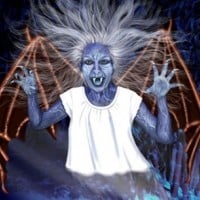
Manananggal is a mythical creature from Filipino mythology.
Manananggal is depicted as a hideous woman with bat wings. At day, she appears as a normal human, but at night, she shows her true form and hunts for a fetus' heart and blood. She goes to a house, separates her body, and seeks for a pregnant woman. Once she finds one, she'll use her long proboscis-like tongue to suck in the fetus heart and blood by shoving it into the pregnant woman's mouth. There's a way to repel the Manananggal: sprinkle salt on the vulnerable lower body. She won't be able to reconnect and will burn in the sunlight.
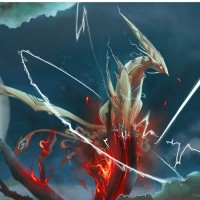
Raiju is a mythical creature from the Japanese mythology.
Raiju is depicted as a blue-furred mammal, usually a cat, canine or a weasel, with the power of lightning. Raiju's cry sounds like thunder cracking. Raiju is the companion of Raijin, the Japanese God of lightning. Raiju is known to sleep in human's navel.
These are absolutely amazing!
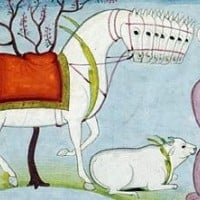
Uchchaihshravas is mythical creature from the Hindu mythology.
Uchchaihshravas is depicted as a 7-headed snow-white flying horse, and is created during the churning of the milk ocean. He considered to be the king of all horses. Uchchaihshravas is often depicted as the vahana of Indra, the God-king of Heaven, but also depicted as the horse of Bali (not to be confused with the island in Indonesia), a demon king.

Bahamut is a mythical creature from the Arabic Christian mythology.
Bahamut is altered from Behemoth. Bahamut is depicted as a giant fish that acts as one of the 7 layers supporting the Earth. Sometimes depicted with an elephant or hippo head.
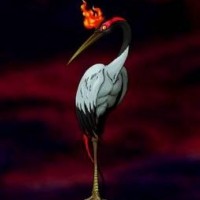
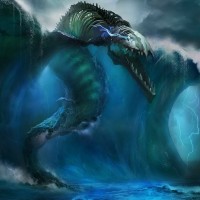
Name translates to "ghost whale". Bake-Kujira is a mythical creature from the Japanese mythology.
Bake-Kujira is a Yōkai depicted as a skeleton whale accompanied with strange birds and fish. In a tale, a fisherman decided to catch it with a spear, but the spear just went through Bake-Kujira's body, and it floated away. Bake-Kujira is also said to bring misfortune and bad luck.
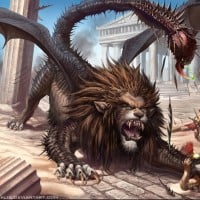
The Manticore is a Persian legendary creature similar to the Egyptian sphinx. It has the body of a red lion, a human head (sometimes) with 3 rows of sharp teeth, sometimes bat-wings (dadadadadada BATMAN), and a trumpet-like voice.-Vestalis
It looks much like a regular Tapir, but it's supposed to devour your nightmares.
The Oni (鬼) is a mythical creature from Japanese mythology.
Oni (鬼) is a term commonly referred to ogre or demon. Come in MANY varieties, though they are commonly depicted to have red or blue skin, savage and unkempt hair, with two or more horns protruding from their heads, oni are formed when a truly evil Himan dies; ending up in one of many Buddhist Hells, then becomes the ogreish servant of the great Lord Enma, King of Hell. The Oni are tasked by Enma to administer horrific and gruesome punishments, such as flaying the victims and crushing their bones with large iron clubs. Though sometimes, if a human is so utterly and truly wicked in life that his soul falls beyond any form of redemption, his flesh will contort and warp as he transforms into an Oni remaining on Earth. - Vestalis
They are basically snake people. For any one who plays dnd, kinda like Yuan-Ti.
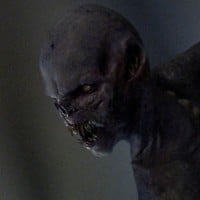
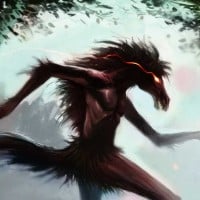
It's said that this creature can read minds.
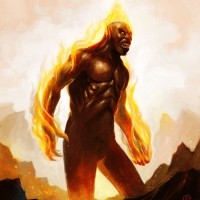
Santelmo is a mythical creature from the Filipino mythology
Santelmo is actually a weather phenomenon where luminous plasma glow in the distance. The name is short for St. Elmo's Fire. In the mythology, Santelmo is depicted as a humanoid creature covered in flames